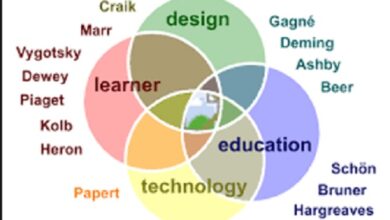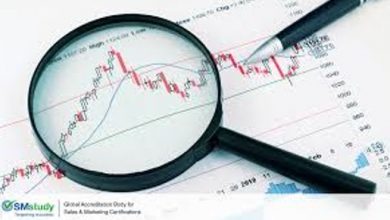Data collection techniques concept Definition and importance
Data collection is a grouped activity or important information is collected about a specific topic; in general, this activity aims to provide the necessary knowledge to carry out a work or research. In this article we will provide you the techniques of data collection.
For example, to discover the symptoms of a new virus, scientists collect data that allow them to establish the characteristics of the disease. To do this, they carry out some research that offers information about the virus. In this case, the data can be modeled by the age of the patients, the discomforts that each one of them experiences, among others.
Data collection is also used in journalistic activities; for example, if a journalist wants to know the economic situation of a city, he must first gather information through interviews conducted with a percentage of the people who live in that location. The journalist then draws conclusions based on the responses of most respondents.
The collection of information is carried out in different ways: it can be through surveys and interviews, through the observation of phenomena or through bibliographic consultations (ie, by reviewing books and materials where the data were recorded) .
Furthermore, this activity is not only carried out by researchers and scientists; It is also widely used in schools and educational institutions. This occurs – for example – when teachers collect data from their students (age, gender, test scores…) with the aim of knowing the academic performance of a group of students.
Data collection concept
Data collection as a concept is relatively recent; it can be established that it arose with the emergence of the disciplines of the 17th century. At that time, knowledge began to be divided into various branches and various names were given to research activities carried out by human beings.
However, some claim that people have used this method since the beginning of civilizations. For example, the philosopher Aristotle was charged with collecting 540 different species of animals; To do this, he had to gather information and methodically observe nature.
Definition and importance
In general terms, data collection is a compilation process whose objective is to obtain information to draw conclusions about a given topic. This activity can be applied in any discipline; whether in the social sciences, business, natural sciences, among others.
For example, if you want to study a parrot species, the researcher must collect a series of data indicating the weight, food and colors of these birds. From this information, the person establishes results that allow us to know more deeply the characteristics of this species.
This activity is very important in any investigation, as it gives veracity to the work. In other words, data collection is essential for people to take the research being carried out seriously. This is because the data allow establishing objective questions and answers that will adequately guide the researcher during his work.
It is worth mentioning that the data can be defined as quantitative or qualitative; in the first case, it is information expressed in numeric characters (such as weight, age, among others). On the other hand, qualitative data are characteristics that are expressed in alphabetical characters; that is, in letters (such as colors, race, socioeconomic status, among others).
Data collection techniques
Generally, there are four techniques for collecting data: interviews, surveys, observation, and questionnaires.
The interviews
Interviews can be defined as conversations aimed at a specific audience, structured in a question-answer format. For this reason, an interview is said to be a brief dialogue between the interviewer and the interviewee.
This meeting aims to gather information about the ideas or feelings of a group of people about a certain topic.
For example, an interview may be conducted to collect data on people’s opinion of vegetarian diets; From this, the researcher can find out how many people would be willing to eat only plant products, leaving aside foods of animal origin.
When using the interview method, you must choose whether the questions will be open or closed: in the first case, they are questions that require descriptive answers (that is, in great detail).
On the other hand, closed questions are those whose answers are limited and were previously defined by the interviewer. For example: answers like yes, no, often, occasionally, never.
the observation
It is one of the oldest and most used data collection techniques throughout history. In general, it consists of observing the subject of the study (it can be a group of people, animals, plants…) in order to determine their characteristics.
In this case, the researcher acts as a spectator who analyzes the particularities of the study subject. For example, if you want to know the characteristics of cactus – object of study -, the researcher can observe and describe the elements that make up this type of plant: the roots, the color, the tips, the flowers (if they have them ), among other aspects.
After observing the group of cacti, we proceed to prepare a list where the characteristics are listed; This activity is considered as a data collection.
To use the observation technique, researchers follow these steps:
1- Define the subject or object to be observed.
2- Determine the duration of this activity (ie the time that will be used for observation).
3- Establish the observation objectives (ie what you want to achieve with this activity).
4- Record what is observed in an orderly manner. This will allow you to quantify or qualify the characteristics effectively.
5- Establish conclusions.
The research
They can be defined as a set of simple and precise questions aimed at a certain percentage of the population. Like interviews, surveys aim to collect information on a particular topic, however, they differ in their mode of application.
In other words, interviews require a deeper interaction between the interviewer and the interviewee, while surveys use a more superficial interaction that does not require the presence of the interviewer, as they can even be sent by post or email.
For example, a clothing brand might send an email survey to its customers to learn about the shoppers’ experience of going to stores. In this way, the brand is collecting data that will allow it to improve the service it offers.
The questionnaires
Questionnaires are mainly used to assess a certain group of people. They should not be confused with surveys, as questionnaires are not based on statistical analysis.
It is worth mentioning that statistical or statistical analysis is a science that seeks to collect data to discover patterns or trends.
Consequently, the surveys aim to obtain specific data that will be evaluated through statistics; instead, the questionnaires follow a simpler structure that does not require statistics.
For example, a quiz might be the exam that a group of students took because it allows teachers to assess students’ knowledge. On the other hand, a survey can be a set of questions that are asked to know the possible results of the presidential elections.
It is important to note that, depending on the type of data, certain techniques will be used. This means that collection methods can vary if they are qualitative or quantitative data.
Techniques according to qualitative data and quantitative data
It should be noted that any data collection technique can produce results in a quantitative or qualitative way, since, basically, values or qualities are the means of data expression.
– Qualitative data collection techniques
As mentioned above, qualitative data are expressed in alphabetical characters and can be acquired primarily through observation, interviews and bibliographic readings (ie information is collected through reading texts).
For example, if you want to make a qualitative observation of the characteristics of worms, the researcher will take into account non-quantifiable (non-numerical) elements such as the color and diet of these insects.
Similarly, a journalist conducts a qualitative interview by asking a group of people about their experience with a particular film.
To do this, the journalist uses questions such as: what do you think of this artist’s performance? Are you satisfied with the director’s performance? Did you like the special effects? Among others. As you can see, the possible answers to these questions don’t use numbers.
– Quantitative data collection techniques
Quantitative techniques consist of using data that were the product of measurements; therefore, researchers only use numerical data; In addition, these data are usually evaluated through statistical analysis.
For example, if a researcher wants to know the percentage of overweight people in a locality, they can conduct a quantitative survey by asking questions about people’s age, sex, weight, and height.
Observation is also used for quantitative investigations; for example, the characteristics of worms can be investigated, but this time from a numerical approach, recording data such as length, number of legs, number of eyes, among others.

